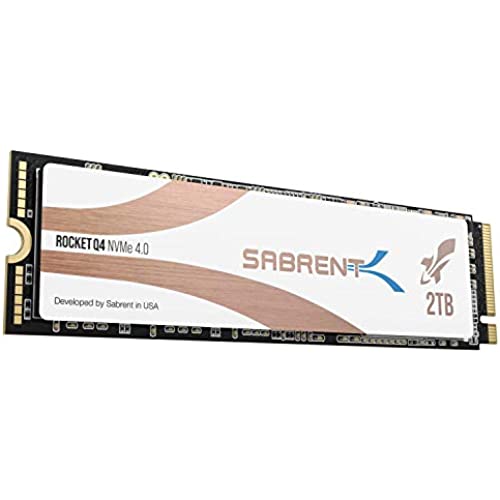
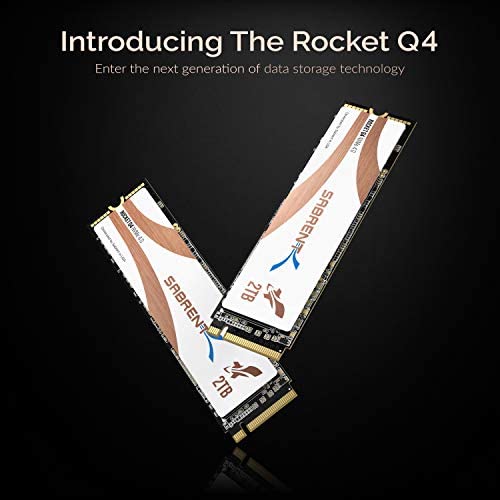
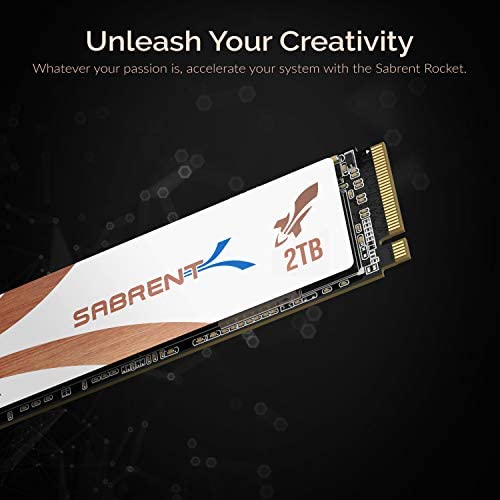
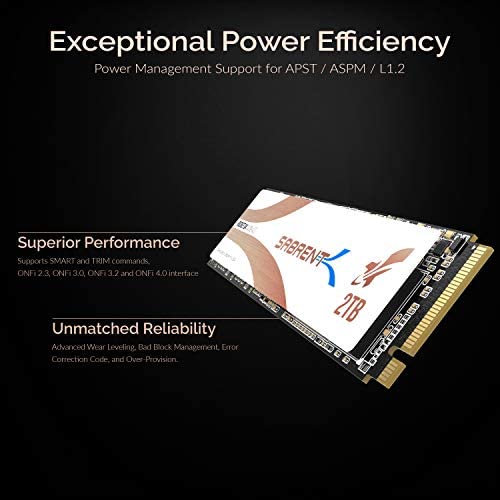
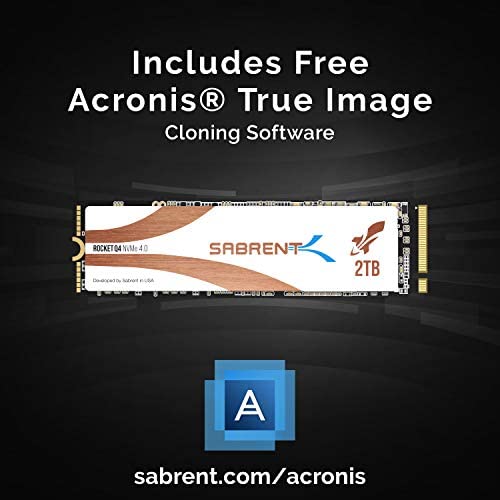
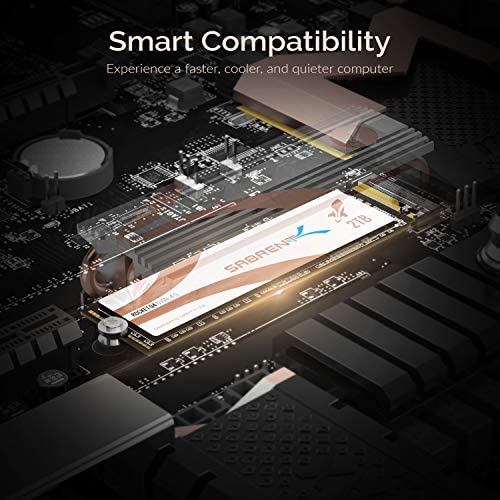
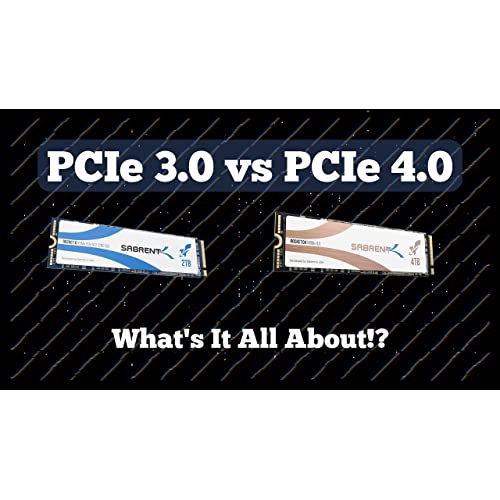











SABRENT 2TB Rocket Q4 NVMe PCIe 4.0 M.2 2280 Internal SSD Maximum Performance Solid State Drive R/W 4800/3600 MB/s (SB-RKTQ4-2TB)
-

Goose
> 24 hourThis drive was on sale for sub-150 dollars, making it the best value PCIe Gen 4 SSD when I bought it for either a next gen console when the PS5 supports it, or a gaming PC. I bought this to use with Nvidias direct storage technology that will be present in games in the future, and they benefit from PCIe Gen 4 SSDs. Like I said in the title, I received the 2TB drive by mistake from the warehouse, and the performance has been very incredibly solid for being a QLC SSD.
-

Jacob
> 24 hourWORKS WITH PS5!!!!! Had it in there for about 3-4 months now
-

Rick
> 24 hourNothing to dislike. This drive cut boot time from a minute or two, down to about 6 seconds. I use it for the O.S. and applications, and keep data separately, on hard drives.
-

Jack B
> 24 hourWanted a lot of space and figured I should take use of the Gen 4 compatibility of my x570 Motherboard. Attached is the performance of the 2TB version at about halfway full from a single test I did.
-

Walter Wu
> 24 hourI installed this drive as my c: drive in a new build on a ASUS Prime TRX40 board with an AMD 3960X, along with a WD 1TB PCIE 3.0 stick as my d: drive. Windows installed fine but about 70% of the time, when I tried to boot, I would get a “no boot drive” error message. I tried clearing the CMOS, updating the BIOS, reseated the devices in their m.2 slot, but was still getting this weird inconsistent behavior. I thought maybe there was some weird hardware incompatibility issues or BIOS settings issue, so I did some internet searching and saw that many other people had the same issue with this Savrent nvme stick. I tried all of the Internet guidance, as did other people, tweaking and changing various UEFI and OS settings in the BIOS without success. To be clear, the BIOS recognizes the drive and will boot from the drive if I boot it from the boot menu of the BIOS, it just would not boot from it upon normal power up. The only solution was to replace the Sabrent drive per the Internet, so it seems that there is a significant percentage of subpar products that might pass Sabrent internal QC systems but exhibit this weird behavior, that is resolved with just getting a replacement. As a last resort, I wiped out both drives and reinstalled windows from from scratch with only the Sabrent. That solved it, but it still doesn’t explain the wonky drive detection in the bios.
-

Rogerdat
> 24 hourFortunately I have a couple m-2 slot and slots for my gpu. The heatsink is nice but if you only have one slot for each dont waste your money on the one with the heatsink. Iys to tall. Sucker is quick though
-

Ely De La Cruz
> 24 hourIm running on PCI-E 3.0 (Asus Zenith Board with AMD 2950x) and it still beats the socks off of my Western Digital 4Gb spinning disc! Worthwhile purchase (especially if your MOBO supports PCI-E 4.0)!
-

J. Aristide
> 24 hourFast and cheap, Sabrent has really built a reputation for themselves in the storage world over the past few years. I am incredibly happy with this drive and would surely buy it again
-

Dan
> 24 hourBe aware that just because this is PCIe v4.0 its not actually using that full capacity. Out of my three NVMEs this is my slowest one. Plotting chia plots takes a good 2x longer on this drive than on my Samsung SSD 980 Pro. The drive is not faulty, its just only rated at 4700/1800 read/write speeds. Had I been more aware of this I would have gotten another Samsung 980 Pro. But I cant fault the drive. Overall for normal usage the dollars-per-capacity is a great price point.
-

Prakash
> 24 hourPricey but cant beat the combination of sure AND storage capacity
